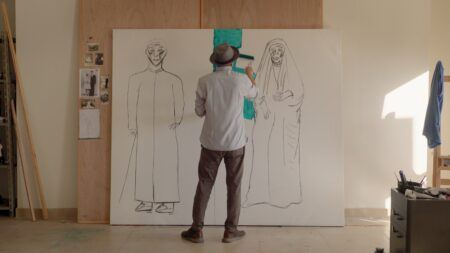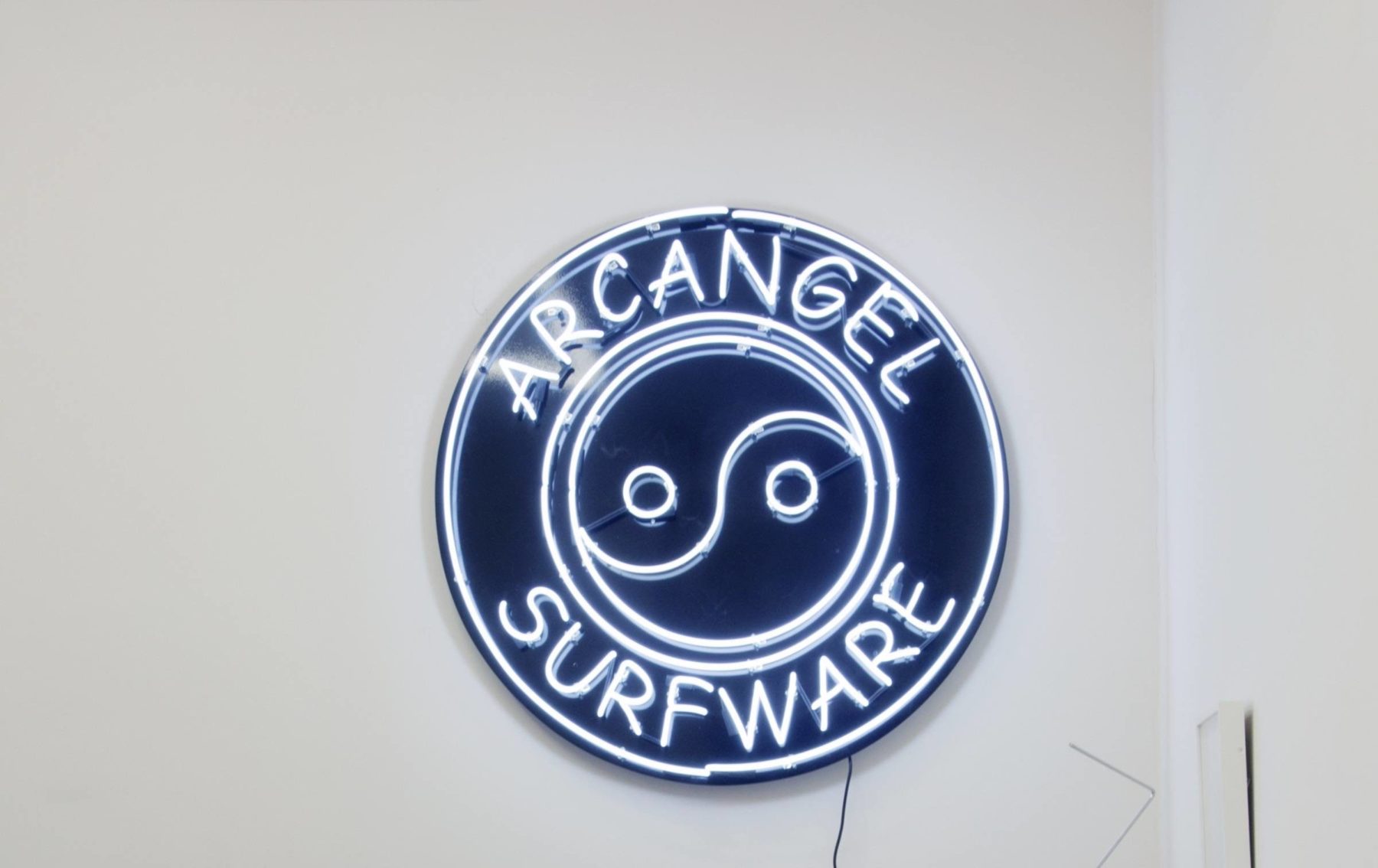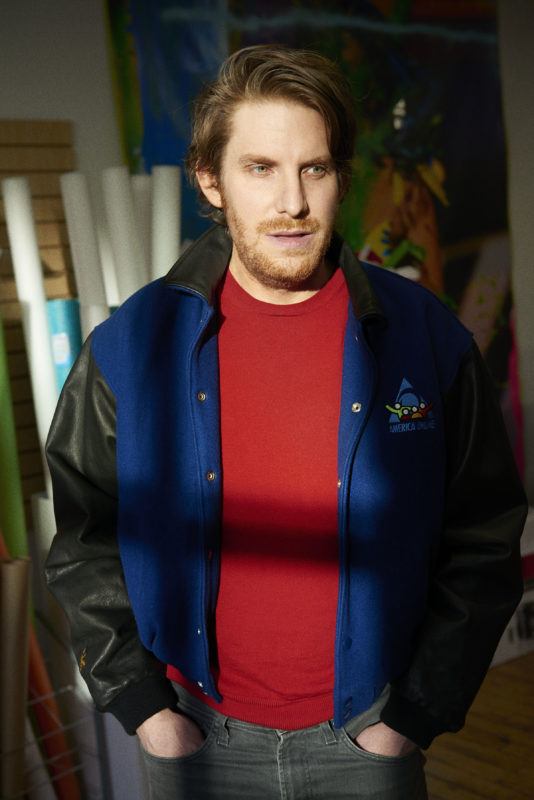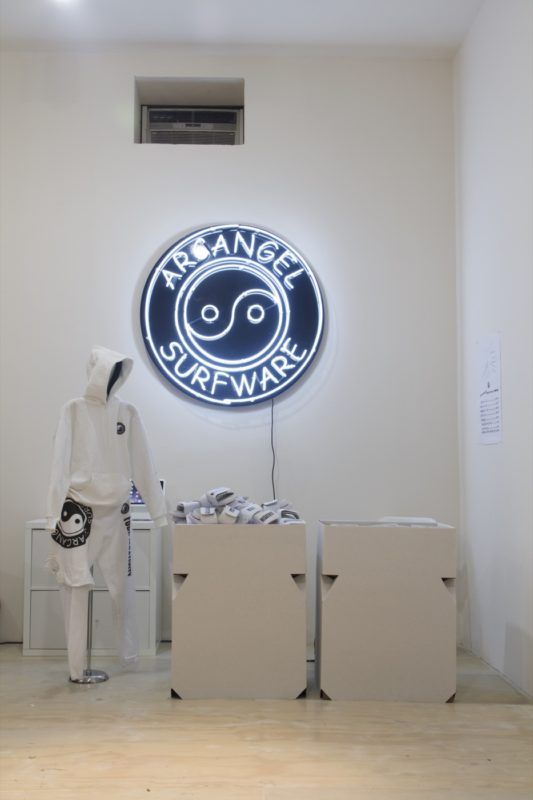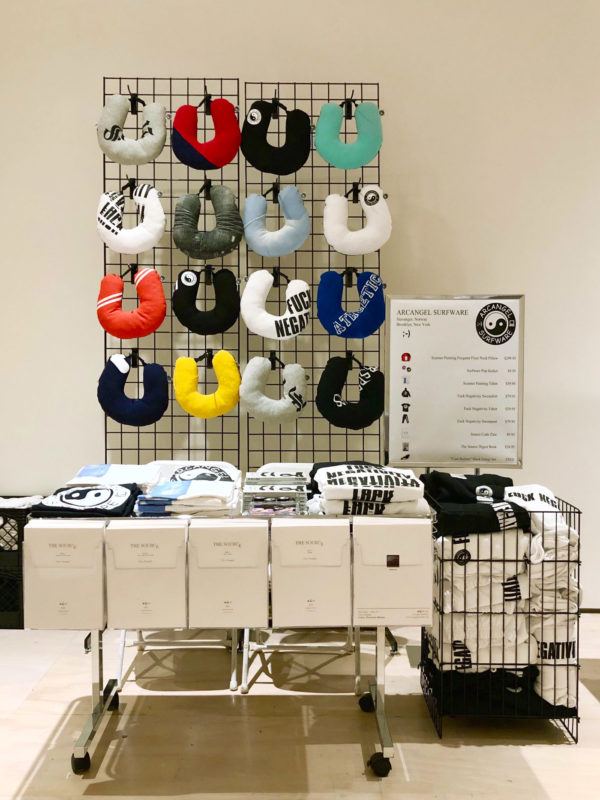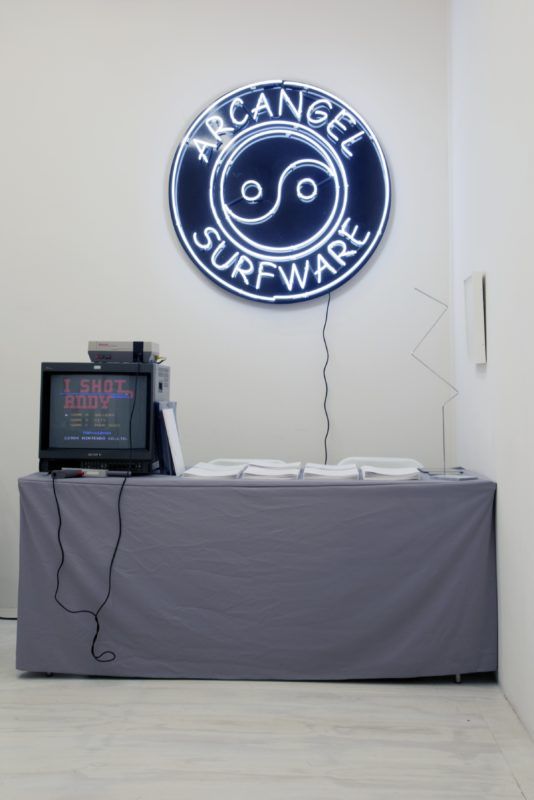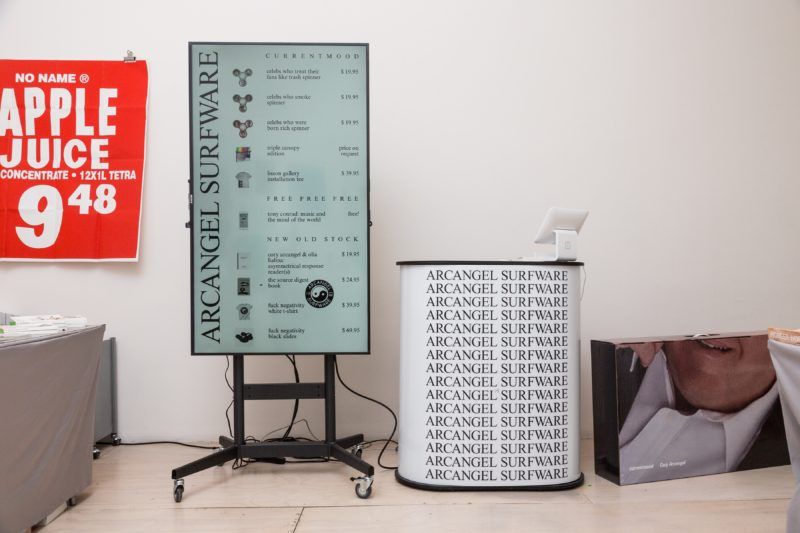Camila Palomino – You started your Arcangel Surfware brand in 2014 in New York City, where you displayed and sold a range of retail products, from comfortable clothing for surfing the web, to zines and publications. Then, when you moved to Norway, you opened an Arcangel Surfware flagship store in Stavanger. Was opening the flagship store a way of mediating your transition to Norwegian society?
Cory Arcangel – Yeah. It was definitely a huge part of it. In New York, we had a presence at the Art Book Fair for many years. We always went full in on those — the book fair’s been the most important New York anchor for the brand. Then I moved to Stavanger. I got the space in 2017, and opened the store in Stavanger from 2018 to 2019. I ran the store every Saturday for two years. All of my projects are intuitive, so I can’t really say I knew what I was doing when I was doing it. But I think for me, my adult life was spent in New York. The only way I ever learned how to be was to be a New Yorker, an artist, type A — all the New York stuff you have to do to survive and grind all the time. When I came to Stavanger, these skills really weren’t useful, but I still had New York tendencies. One major one was real estate. In New York, everyone is obsessed with real estate! In Stavanger, because of the crash of the canning industry, there’s still a ton of empty storefronts and factories — whole factories that are empty and I just couldn’t get over that.
One day I walked by an old storefront near where I lived. It had a for rent sign, and I took it without even knowing what I was going to do with it. And once I had a storefront and I was like, well, I also have this fashion brand, so why don’t I open a store? And once that was decided, then I just treated it as an exhibition. So it took months to create a whole environment with my works — new things and old things.
Parallel to retail, bookmaking has also been a recurring thread in your practice. Can you tell me a bit about your newest project?
Identity Pitches is a collaboration with vocalist Stine Janvin. It’s a book of scores that are based on three traditional Norwegian knitting patterns for lusekofte, traditional Norwegian sweaters. The knitting patterns and the scores manifest in two different ways: as music, and as sweaters. Then, there is a mirror, or what we call “deep fried” patterns and scores, or patterns that I put through my code. And those could then also be manifest as music or as sweaters.
It was Stine that was interested in the knitting patterns and brought that idea. Stine had also just moved to Stavanger with her partner and son. I had moved a few years earlier with my partner and then we had our daughter. So physical location was a big thing on our minds, and also it was Corona time. So I was really here and learning much more about being here, and also of course, I was a huge fan of Stine’s music!
Throughout the whole book, there were a lot of conversations and a lot of really, using a chess term, “deep thinking.” The book came from our overlapping interests and from us trying to figure out where we are, what is here, and what the music of this place is. At some point we even visited the Tesla store. Tesla is everywhere in Stavanger. You can’t throw a stone without hitting a Tesla. It’s a real part of everyday life. Stavanger is an oil city, the energy industry just permeates every aspect of the city and there is a relationship between that industry, the electrification of the automobile industry and Elon Musk. He’s on people’s minds a lot!
Looking at knitted sweater patterns as a music score brings up a continuity with your Arcangel Surfware brand and the line of leisurewear – clothing and objects to comfortably surf the Internet with. Is there a link between this leisurewear and the lusekofte sweaters?
Exactly, at some point, Stine said that they’re basically the baseball hats of Norway, which I think was really smart because I couldn’t figure out what they were. And she was like, “They’re just a baseball hat, something that everybody wears and nobody notices.” It means a kind of casualness and relatability. But yeah, we were thinking of that. That sense of comfort is called koselig in Norway. The goal of life here is to be cozy. I always felt the goal of New York was capital accumulation. It’s a different form of coziness, I guess.
How did you decide that the book form would be important for recording and preserving these patterns and scores?
Originally, we knew there was going to be scores, so we knew we wanted it printed at some point. It also fits into a vernacular tradition of Norwegian knitting books, which are omnipresent here. We were also talking about practicalities like if it could fit on a music stand since we are planning on touring it next year and performing the score at different venues. So it’s a combination of all these different things. It’s like a code book, a knitting book, and a classical Norwegian publication.
